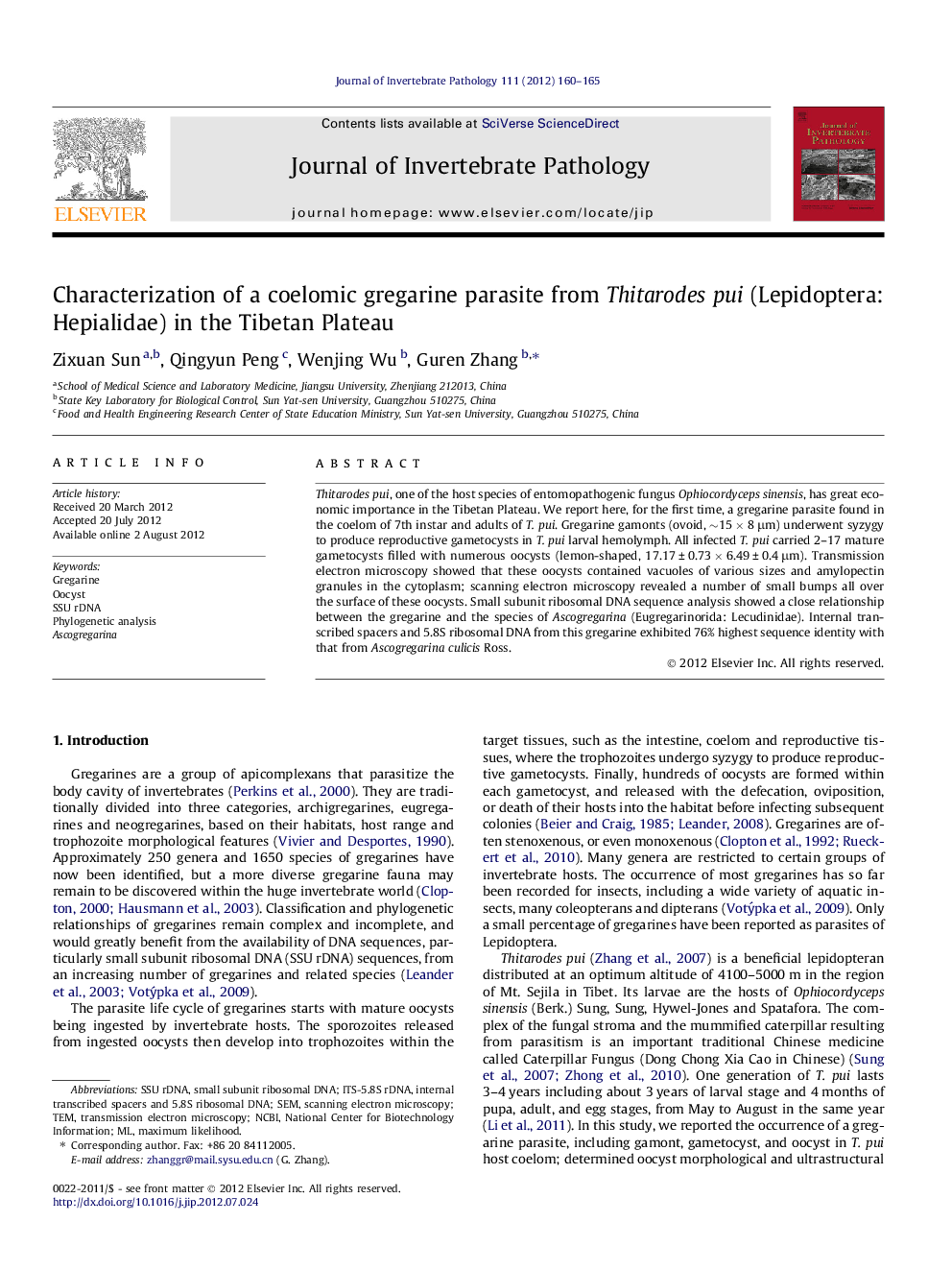| Article ID | Journal | Published Year | Pages | File Type |
|---|---|---|---|---|
| 6389736 | Journal of Invertebrate Pathology | 2012 | 6 Pages |
Thitarodes pui, one of the host species of entomopathogenic fungus Ophiocordyceps sinensis, has great economic importance in the Tibetan Plateau. We report here, for the first time, a gregarine parasite found in the coelom of 7th instar and adults of T. pui. Gregarine gamonts (ovoid, â¼15 Ã 8 μm) underwent syzygy to produce reproductive gametocysts in T. pui larval hemolymph. All infected T. pui carried 2-17 mature gametocysts filled with numerous oocysts (lemon-shaped, 17.17 ± 0.73 Ã 6.49 ± 0.4 μm). Transmission electron microscopy showed that these oocysts contained vacuoles of various sizes and amylopectin granules in the cytoplasm; scanning electron microscopy revealed a number of small bumps all over the surface of these oocysts. Small subunit ribosomal DNA sequence analysis showed a close relationship between the gregarine and the species of Ascogregarina (Eugregarinorida: Lecudinidae). Internal transcribed spacers and 5.8S ribosomal DNA from this gregarine exhibited 76% highest sequence identity with that from Ascogregarina culicis Ross.
Graphical abstractDownload full-size imageHighlights⺠We report a coelomic gregarine parasite from Thitarodes pui confined to the Tibetan Plateau. ⺠Morphological and molecular analyses suggest the gregarine is related to Ascogregarina. ⺠The gregarine may provide novel insights into gregarine biology and evolution.
